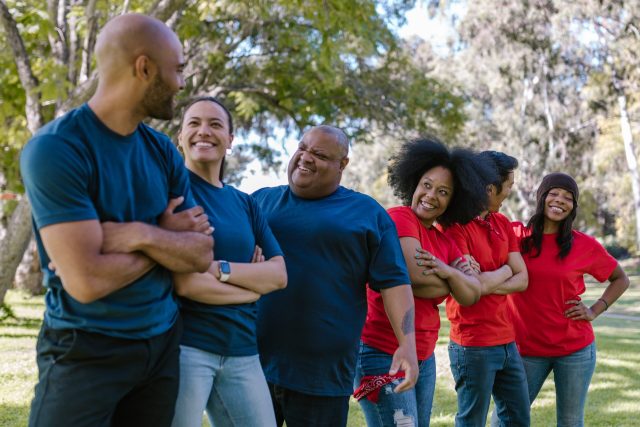Article
5 Questions to Ensure a Successful Local Community Partnership
Whether a church planter is in the early core team stages or has already launched Sunday services, it is essential that both the planter and the church body actively engage the city with the gospel of Jesus Christ.

Whether a church planter is in the early core team stages or has already launched Sunday services, it is essential that both the planter and the church body actively engage the city with the gospel of Jesus Christ. This requires regular engagement with unbelievers, and one of the best ways to achieve this is by partnering with local community organizations or programs. These partnerships can provide church planters with opportunities to share the gospel, build relationships, and be salt and light in the community.
With so many Christian and secular organizations available, how do you decide which one to partner with? How can you discern if a particular partnership is the right fit? Often, what begins with good intentions can lead to fractured relationships and missed opportunities if not approached carefully. Below are five key questions to consider before committing to a local ministry partnership.
1. Does their mission and theology align with yours?
It’s easy to focus first on the task at hand—whether it’s feeding the hungry, mentoring students, supporting a crisis pregnancy center, or aiding those in addiction recovery. While an organization’s mission may align with your church’s demographic and service goals, it’s crucial to ensure that its theological convictions align as well.
For example, a mentoring program or addiction recovery ministry may affirm or promote values that differ from your church’s beliefs, such as gender neutrality or LGBTQ affirmations. It’s essential to ask questions upfront rather than assume that an organization’s Christian affiliation means complete alignment biblically. Additionally, consider their overall mission: What is their goal? What is their “bullseye”?
2. Is this partnership financial or volunteer-based?
Most organizations welcome both financial contributions and volunteer involvement. However, as a new church or core team, your funds may be limited. You must determine what you can realistically offer—whether an annual financial donation or weekly volunteer support.
Your primary goal as a church planter is to declare the gospel to unbelievers in your context. The best partnerships are those that provide direct opportunities for gospel proclamation. Some partnerships may primarily involve financial support, leaving the outreach efforts entirely to the organization. While many churches take this approach, it is generally more beneficial in the early stages to prioritize partnerships that allow you and your core team to engage directly with unbelievers.
3. What are the expectations and responsibilities?
Local organizations often have specific expectations and responsibilities for their partners. They may require volunteers to serve a certain number of hours per week or provide a minimum number of participants to run their programs successfully. It’s important to clarify these expectations upfront.
In their zeal to reach communities, church planters may overcommit or underestimate their capacity to meet an organization’s needs. Be careful not to say “yes” too quickly. Count the cost before deploying volunteers, ensuring that your church or core team can fulfill its commitments without becoming overwhelmed.
4. Is the partnership sustainable long-term?
One of the biggest pitfalls for church planters is establishing partnerships that work in one season of ministry but become unsustainable in the future. For example, a partnership that fits well when your church is small may become a burden as the congregation grows. Volunteers who were once eager to serve may experience burnout, especially if their time is split between serving their community and church responsibilities.
A partnership that works today may not work five years from now. Avoid making long-term commitments you may not be able to keep, and saying statements such as, “We are with you for the long haul.” Instead, consider setting a partnership timeline (e.g., three years) with built-in evaluation periods to determine whether to continue or transition out of the relationship.
5. Who will oversee this partnership?
As a pastor, your responsibilities are extensive—you preach sermons, officiate weddings and funerals, visit hospitals, develop leaders, and much more. While you may be the initial point person for community partnerships, this is not a sustainable long-term role.
As your church grows, consider identifying a dedicated point person to oversee the partnership. This person should be:
- Trustworthy
- Competent and capable of handling the responsibilities
- Skilled in organizing and leading volunteers
- A strong leader
Delegating this role early on will prevent burnout and ensure that the partnership remains well-managed and effective.
Final Thoughts
Navigating local partnerships is an art, as every situation presents unique challenges and opportunities. By thoughtfully working through these five questions, you can establish meaningful, sustainable partnerships that position your church as a valuable ministry partner in your city.




